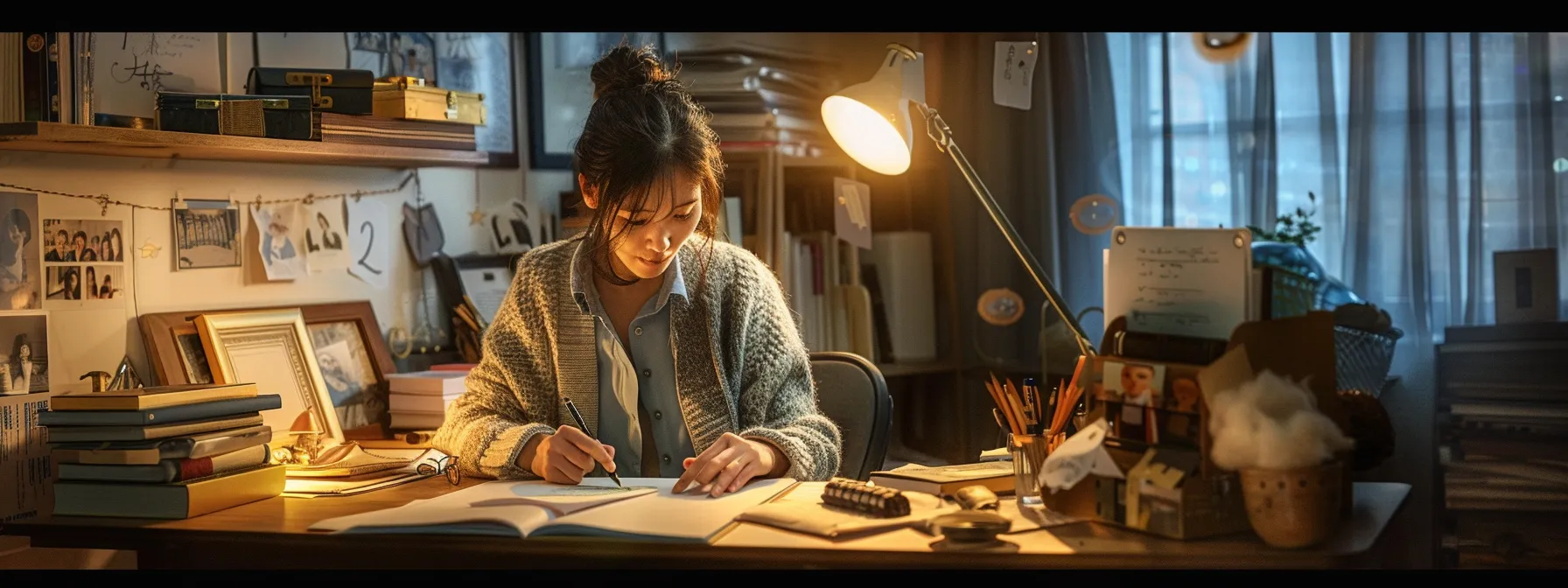Have you ever found yourself puzzled on how to reply to the ubiquitous greeting, “I hope this finds you well”? This opening line, while well-intended, can often leave recipients uncertain about crafting a balanced and personable response. Our article dissects this common email prelude, offering insights on infusing warmth into your professional communications and addressing the often-unspoken challenge of loneliness in an increasingly digital workspace. Readers will learn how to engage with senders in meaningful dialogue, inject a touch of humor to enliven exchanges and compose replies that resonate on a personal level.
Providing practical examples of thoughtful responses, this article illuminates ways to enhance your everyday email interactions, ensuring that “hope you are doing well” receives the attention it deserves.
Understanding the Meaning of I Hope This Finds You Well

The phrase “I hope this finds you well” has woven its way into the fabric of communication, often serving as a courteous and empathetic opening in various correspondences, such as email. This subsection delves into the origins and common use of the expression, shedding light on the underlying narrative that reflects compassion and concern for one’s mental health. Furthermore, it will interpret the emotion encapsulated within these words, offering an understanding of the sentiment that prompts its use in both formal and casual exchanges.
Origins and Common Usage in Communication
The customary salutation “I hope this finds you well” boasts a rich heritage in the world of written communication, often appearing at the outset of personal and professional correspondence. This phrase, akin to wishing one in good health, is not a mere fixture of fiction but a staple in the sincere exchange of letters and emails. As the phrase evolved, variations like “hope this email finds you good” or “hope this email finds you in good health” began to pepper modern-day digital conversations, retaining the original intent of showing consideration and initiating a positive engagement.
In a landscape where remote interactions are prevalent, uttering sentiments such as “hope this email finds well” serves as an essential social construct that helps bridge the physical distance. Its presence in an email is more than a formality; it conveys genuine concern for the well-being of the recipient and eases into the conversation that follows. Professionals who understand and practice this courteous opening often find it propels the dialogue forward with warmth and recognition, underscoring the relationship’s importance while being sensitive to the current health and social environment that surrounds us all.
Interpreting the Sentiment Behind the Phrase

When someone writes, “I hope this message finds you well,” they are not only wishing for the recipient’s good health but are also extending a token of empathy. The phrase indicates a recognition of the recipient’s circumstances, expressing a desire for their situation to be favorable. It is often seen as a sign of good manners and a gentle precursor to the main content of the communication, indicating that the sender cares about the person beyond the immediate purpose of the message.
Interpreting “I hope this note finds you well” as simply a polite greeting would overlook its deeper significance. The sender is essentially saying they hope the recipient is unaffected by the stressors and challenges that may be present in their life. By incorporating this thoughtful approach, the communicator not only demonstrates professionalism but also fosters a connection that transcends the limitations of impersonal digital interaction via email. Using the phrase effectively can help to construct a foundation of respect and kindness, which is integral to nurturing lasting professional relationships.
Personalizing Your Response Effectively

When responding to “I hope this finds you well,” it’s crucial to recognize the context of the message, adapt your tone to suit the relationship, and show genuine interest in the sender. This subsection dissects strategies for crafting responses that acknowledge the sender’s intentions with a touch of personal flair. Readers will gain insight into aligning their replies with the nature of their connection to the sender, ensuring their response maintains the right balance of professionalism and sincerity.
Recognizing the Context of the Message
Recognizing the context in which “I hope this finds you well” is employed is key to crafting an appropriate response. One must consider the relationship they share with the sender, be it professional or personal, and the current circumstances that may be affecting the conversation. A thoughtful response acknowledges the courtesy extended and shows an awareness of any ongoing projects or situations that could influence the exchange.
Respondents must also gauge the sender’s intent, as it can vary from genuine concern to routine politeness. A discerning reader will adjust their reply to echo the sentiment, ensuring it complements the original message’s tone. They may offer a succinct update on their well-being or express appreciation for the sender’s consideration, thereby reinforcing the connection and cultivating a rapport that encourages further correspondence.
Adapting Your Tone to Suit the Relationship
Adapting your tone appropriately is crucial when responding to “I hope this finds you well”. For professional contexts, a response might mirror the formality of the original message, ensuring one projects competence and respect. When replying to a well-known colleague, infusing a sense of camaraderie and familiarity can reflect the established rapport and encourage ongoing communication.
In contrast, responding to a personal contact allows for a more casual tone, one that can convey warmth and personal connection without straying from the essence of courtesy. When crafting your reply, it is beneficial to consider the depth of your relationship and let it guide the warmth and familiarity infused in your message, thus forging stronger bonds through mindful communication.
Showing Genuine Interest in the Sender
The art of demonstrating genuine interest in the sender when replying to “I hope this finds you well” lies in the subtleties of the response, which reflect active listening and acknowledgement of the sender’s efforts. Crafting a reply that addresses the sender by name and refers to a specific point or shared experience from past interactions not only elevates the relevance of the reply but also signals to the sender that their message has been received with attentive consideration rather than a perfunctory nod.
Experts often emphasize the necessity of personalizing the response to foster a deeper connection, suggesting a brief mention of the sender’s recent achievements or ongoing projects can enrich the exchange. This approach renders a typical reply into a tailored, impactful message that resonates with the sender, showing that their well-being matters beyond the obligatory exchange and paving the way for a relationship built on mutual respect and genuine communication.
Crafting a Professional and Polished Reply

Responding to the cordial greeting “I hope this finds you well” requires finesse, particularly when the aim is to craft a reply that is both professional and polished. This subsection will guide readers on how to acknowledge the greeting appropriately, keeping their response brief and precise, while still adhering to the norms of professional etiquette. For both emerging professionals and seasoned veterans, these tips will prove beneficial in sustaining the respect and attention of their colleagues and clients.
Acknowledging the Greeting Appropriately
When acknowledging the phrase “I hope this finds you well” in a response, professionals prioritize brevity while reflecting the respectful tone of the initial message. It’s advisable to promptly reciprocate the sentiment, perhaps with a statement like “Thank you for your kind words; I am well indeed and hope the same for you.” Such a response acknowledges the goodwill extended by the correspondent and upholds the polished tenor expected in professional interactions.
An artful reply to a well-wishing greeting blends authenticity with the conventions of professional etiquette. The individual may enhance the quality of their response by offering a concise sentiment of wellness in return and quickly pivoting to the purpose of their communication. This approach not only upholds formality but also conveys a keen sense of collaboration and a readiness to engage in the matter at hand.
Keeping Your Response Concise and Clear
A concise and clear response to “I hope this finds you well” eliminates ambiguity and promotes effective communication. It respects the recipient’s time by getting straight to the point, briskly transitioning from courteous acknowledgement to the main intent of the message. This efficiency fosters a perception of professionalism, signalling that the responder is considerate and focused on the matter at hand.
To ensure a response remains clear, one should steer clear of jargon and intricate sentence structures that can confuse the message. A professional communicates directly, often using simple language that portrays confidence and ease of understanding. This approach not only demonstrates respect for the correspondence but also reflects an individual’s capability in expressing ideas effectively and thoughtfully.
Maintaining Professional Etiquette
Maintaining professional etiquette in correspondence signals a commitment to respectful and constructive dialogue. When crafting a response to the well-wishing “I hope this finds you well,” it is imperative to provide a gracious reply while maintaining boundaries of formality, which serves to fortify relationships with colleagues and clients alike. The professional understands the importance of a polished exchange and ensures that the tone of their reply reflects courtesy and a focused approach to the topic at hand.
The professional’s aim is to convey both acknowledgment of the sender’s courtesy and their readiness to proceed with the subject matter. They achieve this by integrating a succinct expression of thanks and swiftly directing attention towards the main discussion points. Such a response not only upholds the standards of professional etiquette but also fosters an environment conducive to efficient and amicable communication, illustrating the responder’s adeptness in navigating workplace interactions with finesse.
Adding a Personal Touch to Your Communication

Infusing personal elements into a reply, such as sharing updates or news, can convey an interest in fostering a meaningful connection. Demonstrating gratitude or appreciation further enriches this communication, while rapport is strengthened through the exploration of mutual interests. This subsection will provide strategies to enhance replies with these nuances, ensuring a blend of professionalism and personal engagement that fortifies relationships.
Sharing Relevant Updates or News
Integrating brief personal updates or relevant news in your response to “I hope this finds you well” can substantially deepen the connection with your correspondent. For instance, professionals might mention a recent promotion or successful project completion, which not only imbues the reply with a sense of progress but also provides context that may be pertinent to future interactions. This personal yet professional approach to communication demonstrates an active role in the relationship, fostering a dynamic that reciprocates interest and engagement.
When deciding to include updates or news while crafting a reply, one must ensure that these tidbits offer value to the recipient. Sharing a personal milestone or an industry-relevant event signals to the correspondent that there is a willingness to maintain transparency and relevance in the exchange. Such tailored communication can act as a catalyst for more robust professional dialogue and collaboration, reflecting a partnership that evolves with shared experiences and insights.
Expressing Gratitude or Appreciation
In the context of professional communication, expressing gratitude or appreciation in response to “I hope this finds you well” can serve as a strategic touchstone for deepening business relationships. A professional might integrate a simple thank you, signaling to the correspondent a recognition of their goodwill, which can foster an atmosphere of mutual regard and enhance future interactions.
For example, a responding party may acknowledge the sender’s thoughtful opening by saying, “Your kind words are greatly appreciated, and I am encouraged by your consideration.” This expression of gratitude not only extends the conversation but also sets a positive tone for the detailed discussion that follows, illustrating the sender’s value in the eyes of the respondent.
Building Rapport Through Shared Interests
Building rapport through shared interests initiates lasting and robust professional relationships. When a response to “I hope this finds you well” includes a mention of a mutual project or industry interest, it does more than just continue the conversation; it paves the way for a deeper connection, highlighting the parties’ common goals and fostering collaborative opportunities in their respective fields.
The deft inclusion of personally relevant yet work-appropriate topics in a reply enriches the dialogue, showing an attentive nature that resonates with peers and clients alike. It demonstrates an insightful approach to communication that values both the relationship and the shared professional journey, ensuring that each exchange is more than mere pleasantries but a step towards productive partnership.
Addressing the Sender’s Underlying Intent

In responding to the common opening of “I hope this finds you well,” it’s imperative to discern the sender’s deeper objectives. This section will guide readers on how to identify any implicit requests or needs, respond thoroughly to inquiries, and proffer support where suitable. This key aspect of communication allows one to address not just the expressed sentiments but the actual substance of the message, promoting a professional and reciprocal dialogue.
Identifying Requests or Needs
When the message arrives with “I Hope This Finds You Well,” it may carry implicit requests or needs that require careful attention. The professional must employ critical thinking to decipher these underlying messages, occasionally hidden between lines of polite chatter. It’s not merely about the state of being but often a segue into more pressing matters; hence, one must listen keenly to grasp any specified or hinted requirements that guide the subsequent response.
For instance, if a colleague extends this message amidst a crucial project, their genuine intent likely hinges on an update or collaborative input rather than mere pleasantries. The response should address this unspoken need with a direct and supportive approach, ensuring that the sender receives a clear answer or the offer of assistance they may be looking for. This practice of reading into the context not only enhances problem-solving prowess but also solidifies relationships within professional settings.
Responding to Inquiries Thoroughly
When formulating a response to a message that begins with “I Hope This Finds You Well,” it’s essential to consider any questions the sender has included. Thoroughly addressing these queries demonstrates respect for the sender’s needs and a commitment to clear, effective communication. The response should directly satisfy each inquiry with relevant information and insights, facilitating a productive continuation of the dialogue.
Often, a correspondent imbues their message with subtleties that hint at a need for information or assistance. The adept professional interprets these nuances and responds with the precise details requested. A crucial element of a well-crafted reply includes all the specifics necessary to fulfill any latent expectations. It ensures the recipient feels acknowledged and supported, reinforcing the professional rapport.
Offering Assistance or Support Where Appropriate
When drafting a response to the sender’s expression of goodwill, it’s a professional courtesy to offer assistance or support if the underlying context suggests this might be necessary. One could proffer help by stating, “Should you need assistance on the new project or any further information, please consider me at your service.” Such a response echoes the warmth of the initial greeting and makes clear one’s readiness to contribute constructively to the sender’s needs.
Responding to “I hope this finds you well” with an offer of assistance not only furthers the dialogue but also underlines one’s commitment to a mutually beneficial professional relationship. It’s beneficial to state explicitly, “I’m available to discuss this further if you require,” which conveys a genuine willingness to be of aid and establishes an open line of communication for future collaboration or support.
Practical Examples of Responses

This subsection provides a collection of sample replies suited for various scenarios, offering customizable templates that cater to different contexts and sharing essential tips for tailoring your own response. Each template is crafted with the intention of helping readers navigate the nuances of professional and personal interactions, ensuring the message conveyed is thoughtful and appropriate. Readers can expect to gain practical insights on responding effectively to “I hope this finds you well,” improving their communication skills with ease and expertise.
Sample Replies for Various Situations
In the context of a professional scenario, where maintaining a certain level of formality is expected, a response might read, “Thank you for your considerate words. I appreciate the well wishes and am happy to report that I am in good health. I’m eager to hear more about your recent work.” This approach acknowledges the sender’s sentiment, reciprocates in kind, and transitions smoothly into professional discourse, effectively addressing the underlying intent of fostering continued engagement.
When replying to a close associate or a colleague with whom one shares a more relaxed relationship, the response may include a more personal touch without compromising the professional tone. For instance, “I’m touched by your thoughtful message; thank you. All is well here, and I trust the same is true for you. It’s been a while since our last collaboration, and I look forward to updating you on the latest developments.” This type of reply strikes a balance between warmth and professionalism, enhancing the rapport and inviting further conversation.
Customizable Templates for Different Contexts
Crafting a response to the familiar greeting “I hope this finds you well” benefits greatly from customization, reflecting not just the nature of your relationship with the sender but also the specific context of the interchange. For formal professional interactions, the template can be structured to first express gratitude for the sender’s regards, followed by delivering succinct personal well-being status, and finally pivoting to the matter at hand, keeping the professional boundaries intact. This construct ensures that the reply is both personalized and adeptly balanced to the professional atmosphere.
In scenarios where the connection is more informal, a template may introduce a warmer, more conversational tone while still ensuring that essential updates or information pertinent to shared projects are communicated. Here, the response could begin with a friendly acknowledgment of the sender’s well-wishing, segue into a light, personalized update that relates to mutual interests, and conclude with an enthusiasm for ongoing collaboration. Such tailored responses serve to strengthen professional bonds and reflect both responsiveness and an eagerness to engage further, benefiting from a strategic blend of familiarity and professionalism.
Tips for Tailoring Your Own Response
To craft a response that resonates with the sender, professionals should infuse the reply with a reflection of the relationship’s depth. Whether addressing a manager’s courtesy in an email or replying to a familiar coworker, the response must align with both the nature of the relationship and the context of the previous interaction. This ensures that the tone strikes the right balance between personal regard and professional decorum, leading to enhanced communication dynamics.
One’s professional expertise comes into play when personalizing a response, notably by referring to shared endeavors or anticipated projects. An effective strategy includes briefly updating the sender on relevant developments or expressing eagerness for upcoming collaborations. Using straightforward language, the professional steers the interaction towards productivity, skillfully acknowledging the customary greeting while laying the groundwork for meaningful professional engagement.
Frequently Asked Questions
What does “I hope this finds you well” actually mean?
The phrase “I hope this finds you well” is a polite greeting often used in emails to wish the recipient good health and well-being. It’s a customary way to start a message with a positive and courteous tone.
How can you personalize a response to this greeting?
Personalizing a response to a greeting involves using the recipient’s name, acknowledging the context of your last interaction, and adding a warm, individualized comment that reflects genuine interest and establishes a connection.
What are key components of a professional reply?
A professional reply should be concise, courteous, and clear, with a focus on addressing the query or concern directly while maintaining a respectful tone. It may include a greeting, a thank you, relevant information, and a closing.
How can you add a personal touch to email communication?
Personalizing email communication involves using the recipient’s name, crafting individualized greetings, and referencing shared experiences to create a meaningful, engaging connection.
What might be the sender’s true intent behind this phrase?
Deciphering a sender’s true intent requires context analysis, which involves examining tone, word choice, and preceding communication to uncover underlying motivations or emotions driving the message.
Conclusion
Crafting an adept response to “I hope this finds you well” strengthens professional relationships and demonstrates respect for the correspondent’s sentiments. Such replies, when personalized and precise, signal attentive consideration and foster an environment of mutual regard. Recognizing the implicit requests and context of the message further showcases one’s communication finesse and readiness to engage collaboratively. Therefore, thoughtful acknowledgment of this common greeting lays the groundwork for productive and respectful dialogue, underpinning successful business interactions.


